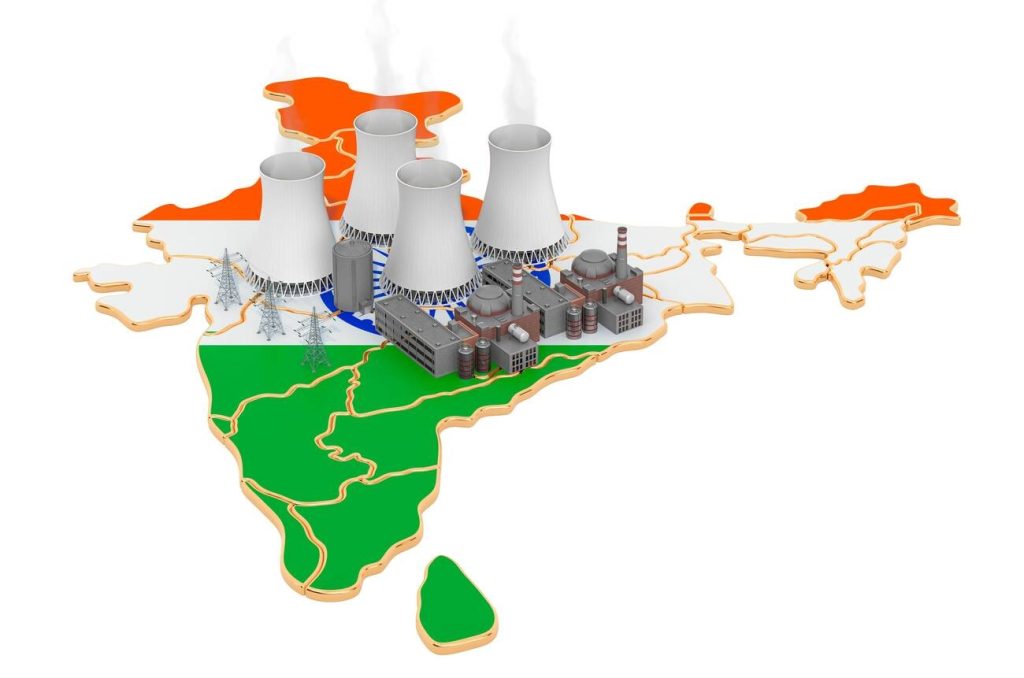Do you want to explore the fascinating world of nuclear power in India? Get ready to dive into a comprehensive guide that will take you through the historical development, current capacity, and future plans for this booming industry. Discover how nuclear power is contributing to India’s electricity sector and learn about the safety measures implemented in their state-of-the-art facilities. Join us on this thrilling journey as we uncover all the ins and outs of nuclear power in India.
Historical Development of Nuclear Power in India
India’s nuclear power program has largely proceeded without fuel or technological assistance from other countries. The country has taken significant steps in developing its own nuclear capabilities, establishing nuclear power plants all across India. The nuclear program of India has been a key part of the country’s energy strategy, aiming to meet the growing demand for electricity and reduce reliance on fossil fuels. With an increasing population and rapid industrialization, nuclear power plays a crucial role in providing clean and sustainable energy for India’s development. The establishment of nuclear plants in India demonstrates the nation’s commitment to harnessing the potential of nuclear energy and achieving self-sufficiency in this field. Through continuous research and development, India is steadily progressing towards becoming a major player in the global nuclear industry.
Current Nuclear Power Capacity and Targets
The government aims to increase nuclear capacity in the country by 22,480 MWe by 2031. In India, nuclear power plays a significant role in meeting the growing demand for electricity. The country has been developing its own indigenous nuclear reactors and fuel cycle to ensure energy security and reduce dependence on imports. Currently, India has a total nuclear capacity of 5.3 GWe supplied by NPCIL. However, the government plans to expand this capacity to 20 GWe by 2020 and eventually reach 60 GWe by 2032. To achieve this target, the government has approved the construction of ten new PHWRs with a capacity of 700 MWe each. With these ambitious goals, India is striving to become self-sufficient in its nuclear power generation and contribute nearly 9% of its electricity from nuclear sources by 2047.
Nuclear Power’s Contribution to India’s Electricity Sector
To understand the contribution of nuclear power to your country’s electricity sector, it is important to analyze the current generation mix and its various sources. Here is a brief overview:
- Coal: The largest contributor, accounting for 72% of electricity generation.
- Hydro: A significant source, contributing 11% of the total.
- Wind and Solar: These renewable sources make up 4% each.
- Natural Gas, Nuclear, Biofuels & Waste, and Oil: These sources contribute smaller percentages ranging from 0.2% to 4%.
Among these sources, nuclear power currently contributes approximately 3% to India’s electricity generation. However, the government has set ambitious targets to increase nuclear capacity and aims for nuclear power to provide 20 GWe by 2020. With plans for further expansion in the future, nuclear power is expected to play a larger role in meeting India’s growing energy demands.
Note: TWh = Terawatt-hours; GWe = Gigawatts electrical
Energy Policy and Industry Development in India
When considering energy policy and industry development in India, you’ll find that the country aims to achieve 100% household electricity connection. This ambitious goal reflects India’s commitment to providing access to electricity for all its citizens. With a rapidly growing economy and population, ensuring universal electricity access is crucial for improving living standards and promoting economic development. The government has set targets and implemented various initiatives to increase electricity generation capacity, improve distribution infrastructure, and promote renewable energy sources. These efforts not only aim to address the current energy needs of the population but also anticipate future demands. By prioritizing household electricity connection, India seeks to empower its citizens with reliable and affordable access to power, ultimately contributing to overall socio-economic progress.
Funding, Ownership, and Future Plans for Nuclear Power
India’s nuclear power expansion plans include involving other public sector and private corporations, such as NTPC, in future projects. Here are four key points about funding, ownership, and future plans for nuclear power in India:
- Funding model: The Nuclear Power Corporation of India Ltd (NPCIL) follows a funding model of 70% equity and 30% debt financing.
- Involvement of other corporations: The government aims to engage other public sector and private corporations in the expansion of nuclear power. This includes partnerships with companies like NTPC.
- Government regulations: The Atomic Energy Act prohibits private control of nuclear power generation. However, amendments in 2016 allow for public sector joint ventures.
- Future targets: The government plans to increase nuclear capacity to 22,480 MWe by 2031. Additionally, the Atomic Energy Commission speculates that nuclear capacity might reach 600-700 GWe by 2050.
These initiatives aim to enhance India’s nuclear power capabilities and meet the country’s growing energy demands in a sustainable manner.
Overview of Specific Reactors and Shutdowns in India
The two Tarapur BWRs were upgraded for continuous cooling during station blackouts, while Madras needed enhanced flood defenses. In terms of specific reactors and shutdowns in India, there have been various instances that required repairs and maintenance. For example, Kakrapar 1 experienced a coolant leak and underwent repairs until May 2019, while Kakrapar 2 was shut down in July 2015 and restarted in September 2018 due to widespread corrosion. Both Tarapur and Madras plants were recommended to have supplementary provisions for major disasters after the Fukushima accident in 2011. Tarapur also saw the connection of Tarapur 4 to the grid in June 2005 and its subsequent commercial operation in September. Similarly, Tarapur 3 was connected to the grid in June 2006 and started commercial operation ahead of schedule in August. The table below provides more information on specific reactors and their status.
| Reactor | Capacity (MWe) | Status |
|---|---|---|
| Kakrapar-1 | Under repair | |
| Kakrapar-2 | Restarted | |
| Tarapur-4 | Operational | |
| Tarapur-3 | Operational |
These reactors play a crucial role in India’s nuclear power program, contributing to the country’s energy generation capacity.
Safety Measures in Nuclear Power Plants in India
Safety is of utmost importance in all activities related to nuclear power plants in India, with strict quality and safety standards followed in the design, construction, commissioning, and operation of these facilities. Here are four key safety measures implemented in nuclear power plants:
- Principles of defense in depth: The design of nuclear facilities and systems incorporates multiple layers of protection to prevent accidents or mitigate their consequences.
- Redundancy: Critical safety systems are duplicated to ensure backup capabilities in case of failures or emergencies.
- Diversity: Different types of safety systems and components are employed to minimize the likelihood of common-mode failures and enhance overall plant safety.
- Robust regulatory framework: The Atomic Energy Regulatory Board (AERB) plays a vital role in framing policies and enforcing safety provisions for nuclear power plants, ensuring a high level of oversight and accountability.
These measures contribute to India’s excellent safety record over years of operation, safeguarding both workers and the general public from potential risks associated with nuclear power generation.
Radiological Protection and Occupational Health in Indian Nuclear Power Plants
When working in nuclear power plants, it’s important to follow strict radiological protection measures and occupational health policies to ensure the well-being of workers. Design aspects play a crucial role in radiological protection, with proper design, plant layout, and adequate shielding prescribed to maintain low radiation levels and contamination potential. Limits for air contamination levels are set for different zones within the plant, and source control is achieved through careful selection of materials and components. Additionally, dose limits for occupational workers have been prescribed by the Atomic Energy Regulatory Board (AERB). These include effective dose limits for whole-body exposure as well as specific limits for individual organs and pregnant women. Occupational health policies are also in place, providing periodic medical examinations, dosimetry, and specialized training in handling radiological emergencies for personnel working in nuclear power plants in India.





